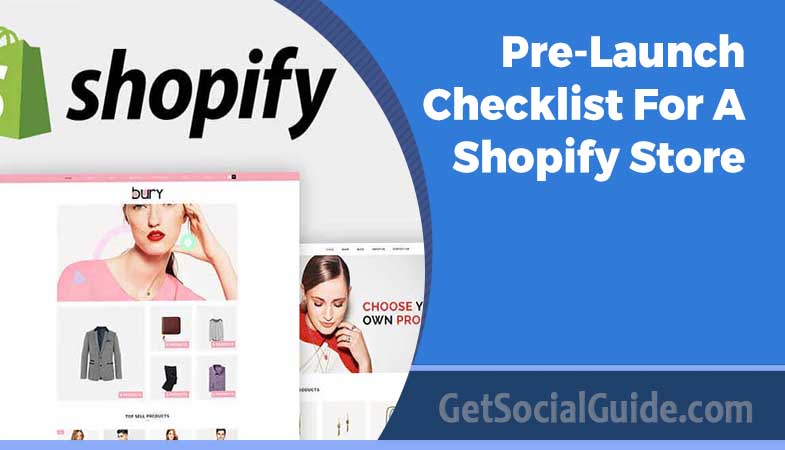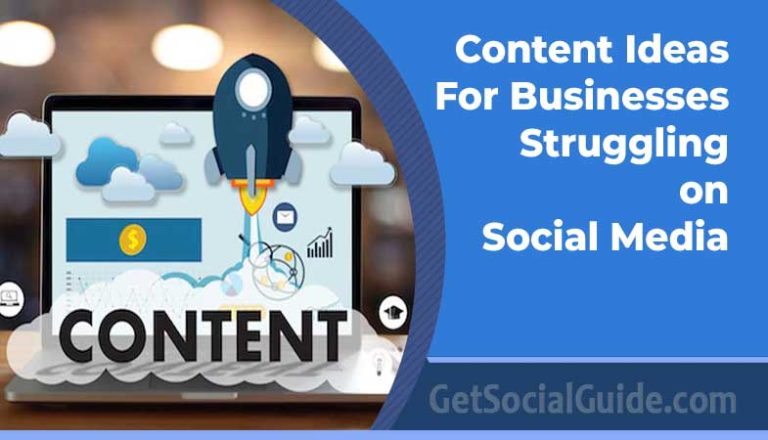You have developed your Shopify store and now it is ready to launch. You can be overwhelming as it is highly invigorating. Thousands of thoughts may be sweeping through your mind. You must want to know whether you have met every requirement for a smooth launch day. Are all the products in the store loading properly? Have you created a marketing plan to promote your store? Does your Shopify store look trustworthy?
Instead of going without any aim for starting your online business, entertaining every frantic thought, take a methodical approach to your launch. Relax your mind and go with a proper checklist approach.
Why The Checklist Is So Necessary?
You have created an amazing store, the product has uploaded and now you can begin, you have also set up all your social accounts. Are you leaving something behind?
Since there are so many components on the website, it is quite easy that you miss any critical step before the launch. If you want everything perfect, better to go with a checklist for reducing ambiguity and streamline the work.
Checklist to follow before launching your Shopify store:
- Including important sales channels
- Add a custom domain
- Payment gateway checking
- Standard pages check
- E-mail notification settings check
- Audit your content
- Image optimization
- Install an analytics tool
- Create a pre-launch marketing plan
- Tax & Shipping settings
- Contact & Support
- Use only the necessary apps
- Search bar & filtering
We will discuss each of these in more detail.
1. Including Important Sales Channels
As per a survey of Harvard Business Review in 2017, only 7% of the customers go online for shopping; the consumer base is growing multi-channel; in fact, nearly three-fourths of the customers use different channels for a single purchase. If you want to leverage multi-channel retailing then you have to choose the best channels for your online store. Add these channels to your store and start reaping more sales. Some of the popular channels that you can consider are:
- eBay
- Amazon
- Social Channels
- Google Shopping
These sales channels can be connected with the core of your Shopify business. Thus you will able to easily track your orders, products, and customers on all platforms.
2. Add A Custom Domain
This must be the first priority while opening an e-commerce store, but it may be the last thing that has come to your mind. Using a custom domain for your site will give you better brand recognition and the target audience can easily remember the website URL.
Firstly you have to check whether the name you are considering for your business, its domain are available. If it is, and the name isn’t a trademark then you can purchase the domain name either through Shopify directly or through other means. If the name is not available, then you have to again work on your creative skills and come up with another unique name that demonstrates your brand.
You can also use a different top-level domain (TLD). A TLD is the .com part of the domain. There are many different TLDs available such as .gov, .org, .co, .store etc.
3. Payment Gateway Checking
It is easy and quick to understand. Before driving traffic on your Shopify store, you want to be certain whether the audience can actually complete a purchase. Thus, make a test order on your store using a live payment method to ensure everything is working correctly. You can refund your order immediately afterward.
4. Standard Pages Check
It is better to provide a few static pages about your business for the users so they can know about you and trust your business. These are the few pages that you must create:
- HomePage: There should be no qualm over the fact that HomePage is the most important page on your site. It is mostly the first place where the users land and if not then the second place they go. The HomePage should demonstrate about your site, with captivating UI, interacting UX, and easy to understand navigation.
- Contact Us page: If the customers can’t reach you with their queries, then you may be running your store in delusion. On the contact page, provide all the vital information by which the customers can reach you. You can also develop a contact form so that they can send you a message without leaving the site.
- About Us Page: People check the About Us page of a site to know about your company and products or services. Many e-commerce retailers don’t give this much priority, but it can increase your sales if approached with proper strategy.
- FAQs: Frequent Asked Questions or FAQ page can let you interact with your customers by answering the potential queries. It also let’s include important keywords without looking odd. For creating an effective FAQ page, analyze the potential queries. You can also check your competitors’ sites and check the questions users have asked. Mostly, people have questions about shipping charges, free delivery, returns & refunds, etc.
5. E-mail Notification Settings Check
E-mail marketing is amongst the oldest marketing methods but it still works a lot. You can reach your customers through e-mails and can create automated e-mails for several events such as abandoned cart recovery e-mails, discounts, promotions, festive season sales, etc. Edit your e-mail templates and create the order that nurtures your list and ultimately drives sales. You can use MailChimp, Seguno, Klaviyo, etc. and consider this sequence of the mails:
- Welcome E-mails
- Order receipts
- Abandoned cart e-mail
- Order confirmation
- Shipping tracking notifications
6. Audit The Content
Sometimes, you may be engrossed so much in the development that you will not focus on the small things such as spelling mistakes, grammar, broken links, etc. Thus, start reading the paragraphs on your site with a relaxed mind, you will start getting the errors.
The content should be of consistent style on your site i.e. what grammar you are following among American or British, it should be on the whole site. If you want to coin your own words make them consistent across the site.
In the technical aspect, check out the broken links, especially 404s as well as image-rending issues and mobile responsiveness.
7. Image Optimization
To make your site look attractive you will be using High-Quality images but those images can also hurt the speed of the website as well as user experience. Thus, make sure to optimize the images on the web for ensuring fast loading times. Here are a few ways of optimizing the images on the web:
- Give a description of your images: if you give a description of the images including the product images, then it will help in SEO, and also the disabled users can understand the image.
- Optimizing alt attributes: The alt attributes are used for web accessibility. Again make them descriptive so that the Google search engine spider can crawl and rank keywords.
Do you know that 45% of the sites have images with missing ALT tags and another 10% have broken internal images?
- Reduce the size of the image: You can compress the images on the site without degrading their quality. Thus lighter images will be easily loaded on the page.
- Appropriate Image file type: Mostly, images are used in .jpeg and .png format. But for the thumbnails or decorative images, you may need to use .gif files.
- Thumbnails optimization: Thumbnails are present on every e-commerce site so they can also have a significant load on the page load time. Use a small image as a thumbnail.
- Test the images: You can do A/B tests to check which images are working best (i.e. contextual vs. white background).
8. Install An Analytics Tool
It is quite easy to install the analytics tool in your e-commerce store. It is quite essential as it will give you highly valuable insights into your visitors and customers. Shopify comes with its own analytic tool but it is not that much reliable. If you want highly deep analytics then we will recommend using Google Analytics, as it is a highly popular analytic tool. You can also use a combination of tools to analyze your business.
9. Create A Prelaunch Marketing Plan
After launching the site, you will want your audience to know about that. You have to do this by creating a marketing plan. Draft a marketing plan, so that once you go live you just have to follow the footsteps that you already outlined.
10. Tax & Shipping Settings
Make sure that you are charging appropriate taxes and shipping for your products. Else, either you can lose your profits or can go into legal trouble by charging more taxes. You may need to add the sales tax, depending upon your business location. Consult a legal advisor regarding these things.
11. Contact & Support
Remember, we told you to create a contact us page so that the customers can reach you. But that’s not the only place where the customers want to reach you. You have to include business address, phone number, and if possible live chat on the website pages. You can even use a chatbot for this.
12. Use Only The Necessary Apps
You can find thousands of apps in the Shopify app store, but not all of them are useful for you. You have to analyze which apps are essential for your store and only include those apps. Else, it can slow down your Admin panel and also impact the speed of your website.
13. Search Bar and Filtering
Searching is the first way by which the users interact with your Shopify store. Search is not just limited to improving the user experience but also helps in a better conversion rate. When a user searches for a product, he is more likely to make a purchase in comparison to that user who navigates for a product. With the right search service, a business can also learn more about what customers want by what they’re searching for, information that can inform future business decisions.
Wrapping Up
In this article, we have gone through all the essential checkpoints that we have to focus on before launching a Shopify store. If you are trying to create a Shopify store with custom design and functionality then you may hire a Shopify developer to assist you in the process. A professional developer has enough experience and technical knowledge to guide you through the initial process of launching a shopify store.




Thanks for the article
thanks for comments, keep reading and sharing
Shopify is one of the world’s leading eCommerce platforms that is simple and easy to run. Amazing content loved it very useful
thanks keep reading and sharing
Thanks for the article. Shopify is one of the world’s leading eCommerce platforms
Hi,
I am Sami from PinToDown and I was just going through your website and it’s quite stunning and comprehensive. I have a question for you do you accept guest posts on your website? Because I am interested in such an opportunity. Please get back to me so we can discuss it.
Thanks
yes please check inbox I emailed you the details
Thanks keep reading and sharing
This information is very beneficial for me. Thanks for sharing this informative post.
Interesting blog.It would be great if you can provide more details about it. Thanks you…..
very informative content. your site is very well decorated and I love it. I am waiting for further post. Best of luck for your future
Thanks keep reading and sharing
Very helpful! thank you for the Blog Commenting Sites list, it is very helpful, I was searching for some valuable links. Good work, and keep sharing your research and knowledge. Thank you again.
Thanks keep reading and sharing
This post really too helpful for me to do blog commenting. Thank you for sharing. I am waiting for your next article. Thank You So Much for sharing such a great List of Blog Commenting Sites to do sumptuous Backlinks, Which will help to grow organic ranking in the Search Engine………
You’re very welcome! We’re delighted that you found our post on getsocialguide.com informative and useful. Thank you for the kind words, and we’re glad to hear that you enjoyed our blog. If you have any more questions or need further information, feel free to ask!
Hello! Thanks for sharing this useful pre-launch checklist for a Shopify store.
Great checklist. Super helpful for anyone getting ready to launch a Shopify store.